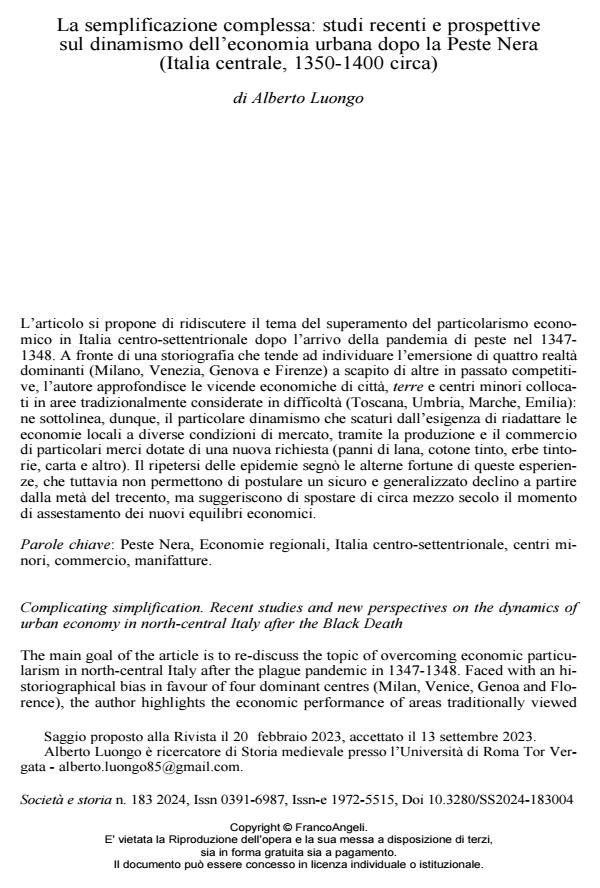Complicating simplification. Recent studies and new perspectives on the dynamics of urban economy in north-central Italy after the Black Death
Journal title SOCIETÀ E STORIA
Author/s Alberto Luongo
Publishing Year 2024 Issue 2024/183
Language Italian Pages 26 P. 119-144 File size 171 KB
DOI 10.3280/SS2024-183004
DOI is like a bar code for intellectual property: to have more infomation
click here
Below, you can see the article first page
If you want to buy this article in PDF format, you can do it, following the instructions to buy download credits

FrancoAngeli is member of Publishers International Linking Association, Inc (PILA), a not-for-profit association which run the CrossRef service enabling links to and from online scholarly content.
The main goal of the article is to re-discuss the topic of overcoming economic particularism in north-central Italy after the plague pandemic in 1347-1348. Faced with an historiographical bias in favour of four dominant centres (Milan, Venice, Genoa and Florence), the author highlights the economic performance of areas traditionally viewed as less progressive at the expense of others that were competitive in the past, the author delves into the economic lives of a group of middling and small towns located in areas traditionally considered to be going through hard times (Tuscany, Umbria, Marche, Emilia, Piedmont and Friuli): he emphasises the particular dynamism that arose from the need to readjust local economies to different market conditions, through the production and trade of particular goods in new demand (woollen cloth, dyed cotton, dyeing herbs, paper and others). The recurrence of epidemics explains the alternating fortunes of these experiences; this, however, does not warrant speaking of a generalised decline starting from the mid-14th century, but suggests that the change in the economic climate should be postponed by about half a century.
Keywords: Black Death, Regional Economies, North-central Italy, small towns, trade, manufactures.
- La mobilità sociale degli operatori economici aretini dopo la Peste Nera: nuovi dati dai registri notarili dell’Archivio capitolare di Arezzo Alberto Luongo, in En la España Medieval /2024 pp.23
DOI: 10.5209/elem.94749
Alberto Luongo, La semplificazione complessa: studi recenti e prospettive sul dinamismo dell’economia urbana dopo la Peste Nera (Italia centrale, 1350-1400 circa) in "SOCIETÀ E STORIA " 183/2024, pp 119-144, DOI: 10.3280/SS2024-183004